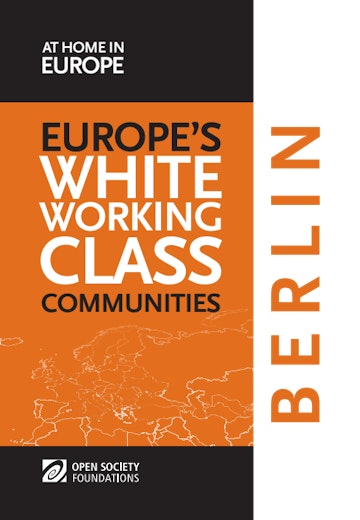How a White Working Class Community in Berlin Embraced Its New Immigrants
By Andreas Hieronymus & Dušan Ugrina
In the quarter-century since unification, Germany has officially recognized itself as a country of immigration. It changed its citizenship law, implemented EU legislation on anti-discrimination and equality, developed Europe’s largest low-paid sector as its white and non-white “working poor” population grew, and has become the leading economic power in the EU.
Yet anti-immigrant movements like PEGIDA (Patriotic Europeans Against the Islamization of the Occident) in the eastern city of Dresden have raised concerns about the return of the “ugly German.” The collective trauma can still be felt from the early 1990s, when a wave of racist, anti-immigrant pogroms in East and West Germany followed unification.
PEGIDA-like movements have not taken hold, however, in the western part of Germany, or even in most other cities of the former East Germany. Such rallies have mobilized only a few people, while counter-demonstrations number in the tens of thousands. Since unification, in fact, many people have come to support undocumented “Lampedusa refugees,” who cross into Germany through Italy. In areas with large immigrant populations, solidarity with new refugees can been seen in both the east and the west.
The report White Working Class Communities in Berlin, part of a comparative six-city study by the Open Society Initiative for Europe, indicates how unification affected identity formation and feelings of “belonging” among the majority local population in the Berlin district of Marzahn-Hellersdorf, once a symbol of the success of real socialism. While recognizing that the phrase “white working class” does not neatly translate into public and political discourse, this project uses the term as shorthand for members of the majority population living in neighborhoods with high indicators of social, economic, and political marginalization.
The case study of Marzahn highlights the post-socialist transformation of a local community. Today’s Marzahn is largely made up of white Germans, but also has a visible presence of ethnic minorities. And although Marzahn has a negative public image as a racist, East German ghetto, residents there report a strong and positive sense of belonging. Younger residents, especially, don’t see their district’s emerging ethnic diversity as a problem. The report also finds that different groups form distinct identities based on available opportunities and the potential to be included and represented in society.
This final point is crucial, because movements like PEGIDA trade on the challenges posed by cultural diversity and immigration, and exploit people’s feelings of powerlessness and lack of influence in the political process. The establishment of a reception center for asylum seekers in Marzahn-Hellersdorf in 2013 exemplifies how such feelings can lead to discrimination. The decision by the Berlin state administration to create the asylum-seekers center was made from the top down, and didn’t take into account the opinions and feelings of the local community. This process only reinforced residents’ belief that their voices are not heard, a feeling that recalled the traumas of unification.
The study shows that, if the local population had been involved in the process of establishing the reception center, it would have had myriad resources at hand to manage the question of asylum seekers differently. For example, the lively local civil society and the sense of belonging and identity among the older generation, which was formed back when Marzahn was built, could have provided a foundation for building solidarity with the newcomers.
The immigration dynamic in Germany is changing. Until recently, these newcomers typically entered low-paid, blue-collar jobs, which put them at odds mainly with working-class people. Today, however, many immigrants enter Germany as skilled labor, challenging two groups already in the country: the emerging middle class of children and grandchildren of the immigrants who moved to Germany in the 1960s and ’70s, and the influx of young, skilled, middle-class people from crisis-ridden EU countries who are moving freely to Germany.
If we interpret racism as a social practice to protect one’s own social status by downgrading and excluding racialized “competitors,” we can understand why groups like PEGIDA are so easily mobilized by the right wing and racists, and why they unite behind a “common enemy” such as Islam and “the Muslim.” This perspective enables us to develop alternative practices that emphasize cooperation over competition, produce a good life for all, take into account the experiences of locals, and find a pathway based on mutual respect and openness.
Andreas Hieronymus is a senior program officer for Open Society–Europe and Central Asia.
Dušan Ugrina is a social anthropologist and co-author of the White Working Class Communities in Berlin report.
